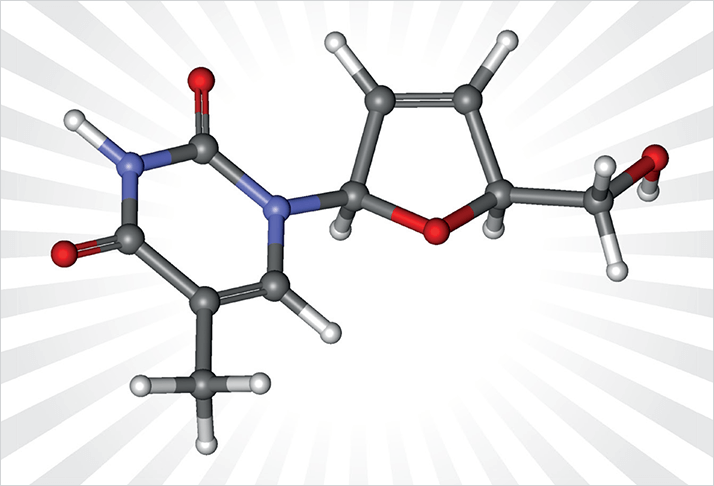
Repurposing a well-established HIV drug could be the key to treating dry age-related macular degeneration (AMD). Despite the huge prevalence of the condition, there are currently no approved agents that treat dry AMD. There are, however, a number in the pipeline, and work from Jayakrishna Ambati’s laboratory at the University of Kentucky hopes to add to that – with an existing class of drug. Nucleoside reverse transcriptase inhibitors (NRTIs) were originally designed to treat cancer in the 1960s, then re-emerged in the late 1980s as the first effective anti-HIV agent. Now, it’s hoped that a previously undiscovered anti-inflammatory activity that this class of drugs possess can be exploited to treat dry AMD – as well as other diseases that share a common signaling pathway.
In dry AMD, a biomolecule known as Alu RNA accumulates in the retina. An overabundance of Alu RNA leads to activation of a toxic pathway – the NLRP3 inflammasome – that cause cell death of the retinal pigment epithelium (RPE). The University of Kentucky-based research group noted that Alu elements, like the HIV virus, rely on the reverse transcriptase enzyme to fulfill their life cycle (1). With that in mind, they hypothesized that NRTIs might be able to block Alu RNA-induced cytotoxicity. What they discovered, though, was more complex than that – the NRTIs did indeed prevent RPE degeneration in mice, but the drugs’ protective action occurred independently of their reverse transcriptase inhibition. Rather, NRTIs possess a previously unknown ability to block an innate immune system component known as the “inflammasome,” which facilitates the toxicity of Alu RNA in the retina. With the inflammatory pathway inhibited, the enzymes that lead to cell death remain unactivated and the RPE is protected from degeneration. Inflammasome blockade was effective in treating geographic atrophy – the late stage of dry AMD – in mouse models (Figure 1). Furthermore, it should be possible to treat wet AMD through the same pathway, suggesting that NRTIs may have a therapeutic role to play in both forms of AMD.
The benefit to using NRTIs to treat AMD is that they are already a diverse and widely used class of drugs, with several decades’ worth of collected pharmacokinetic and safety data. “Repurposing of NRTIs could be advantageous, for one, because they are very inexpensive,” says Benjamin Fowler, lead author on the study and a postdoctoral fellow in Ambati’s laboratory. “Moreover, through decades of clinical experience, we know that some of the drugs we tested are incredibly safe. Since these NRTIs are already FDA-approved, they could be rapidly and inexpensively translated into therapies for a variety of untreatable or poorly treatable conditions.” Ambati adds, “We are excited at the prospect of testing whether NRTIs could be effective in halting the progression of AMD in patients.”
References
- B.J. Fowler, B.D. Gelfand, Y. Kim, et al., “Nucleoside reverse transcriptase inhibitors possess intrinsic anti-inflammatory activity”, Science, 346, 1000–1003 (2014). doi: 10.1126/science.1261754.
